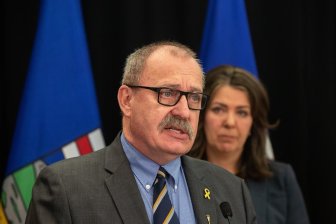Foster children are less likely to graduate high school and will earn less income over a lifetime compared to the average Canadian, according to a study released by the Conference Board of Canada.

The study, “Success For All: Investing in the Future of Canadian Children in Care”, found that a child exiting the foster care system at 19 will earn about $326,000 less over his or her lifespan than other Canadians and is more likely to struggle with mental health problems.
Louis Theriault, one of the study’s authors, says ignoring the issue can be costly to Canadians – an estimated $7.5 billion over the next 10 years due to high social assistance payments, collecting lower tax revenues and other associated costs.
Higher rates of unemployment and lower-than-average earnings could cost all levels of government a cumulative $126,000 per former foster child, the study said.
According to a 2011 Statistics Canada tally, 47,885 children were living in foster care in Canada in 2011 – about 30% more, proportionately, than in the United States.
And according to statistics provided by the Ontario Association of Children’s Aid Societies, only 44 per cent of former foster children graduate from high school, compared to 81 per cent of the general population.
- ‘Shock and disbelief’ after Manitoba school trustee’s Indigenous comments
- Canadian man dies during Texas Ironman event. His widow wants answers as to why
- Several baby products have been recalled by Health Canada. Here’s the list
- ‘Sciatica was gone’: hospital performs robot-assisted spinal surgery in Canadian first
“If we look at the graduation rate and the mental health situation and we only look at those two sides of the issue, these two alone can give us major return for society and the economy if we take care of them,” said Theriault, executive director of economic initiatives at the Conference Board.
“Not only is it the right thing to do for a wealthy country to take care of these kids more strategically and have a plan for them when they leave the care of the state, but there is major economic benefit.”
Theriault added they would have liked to look at other factors – crime, early pregnancy and the impact of foster care on particular populations – but there’s “a lack of information available.”
The problem isn’t only economic, says Richard Mitchell, associate professor of child and youth studies at the Brock University. Homelessness, social exclusion and mental health dog children who end up in care, making their needs much more acute and tougher to address.
How Canada compares
The United Nation’s Committee on the Rights of the Child reviewed Canada’s child welfare and rights practices in April 2013 and concluded Canada lagged behind many of its western peers, especially when it comes to caring for Aboriginal and immigrant children, and children with disabilities.
“If you look at Canada’s status in the world in terms of wealthy nations, not having a more focused strategy on what we do with these children is something that we have to work on,” Theriault said.
The report listed 47 recommendations to the Canadian government.
One recommendation, giving children the right to a say in their fate, is one Mitchell feels is particularly important.
“Simply listen to the voices and the experiences of the kids themselves and those who have been silenced from the discussion. A lot of kids leave care after living in dozens of homes and facilities and spend the rest of their lives grieving their lost childhood,” he said.
“There’s so much more there when we listen and hear the views of the kids themselves coming out of these situations.”
A fractured foster system
Mitchell attributes the dysfunction to a lack of accepted responsibility from Canada’s governments.
“The age of 18 is certainly not the age in which most people are kicked out of their own families in regular domestic situations,” Mitchell said. “So why should the state just simply walk away from our responsibilities to help young people, navigate their way to successful adulthood and employment? It’s a waste of the resources in the first place, I would argue.”
Theriault argues lack of communication between agencies is a major factor.
“The systems are not talking to each other and there’s definitely a government role needed to bring the hard evidence to the table so both businesses and academics can engage in the process of informing the best strategies so that we can ensure the best future for these children,” he said. “We want to create that national dialogue that’s missing.”




Comments